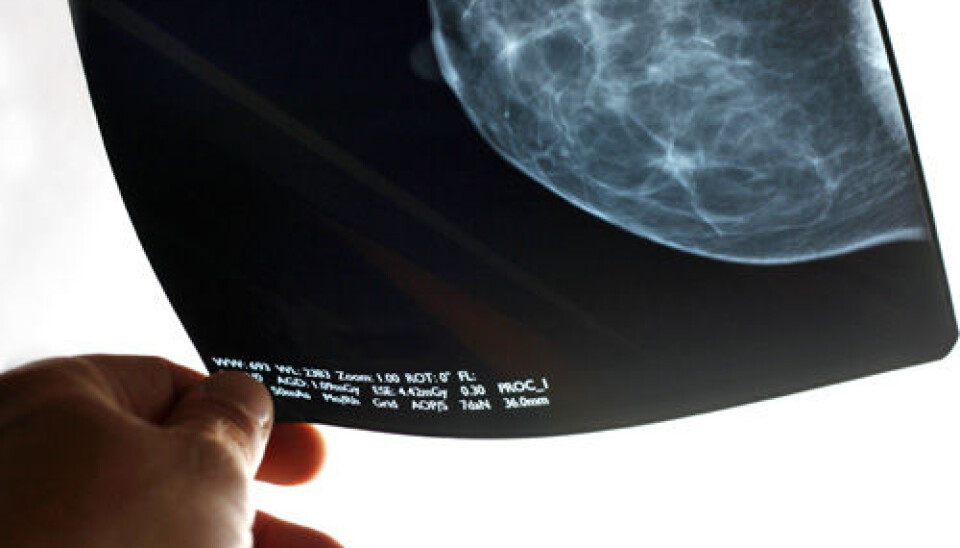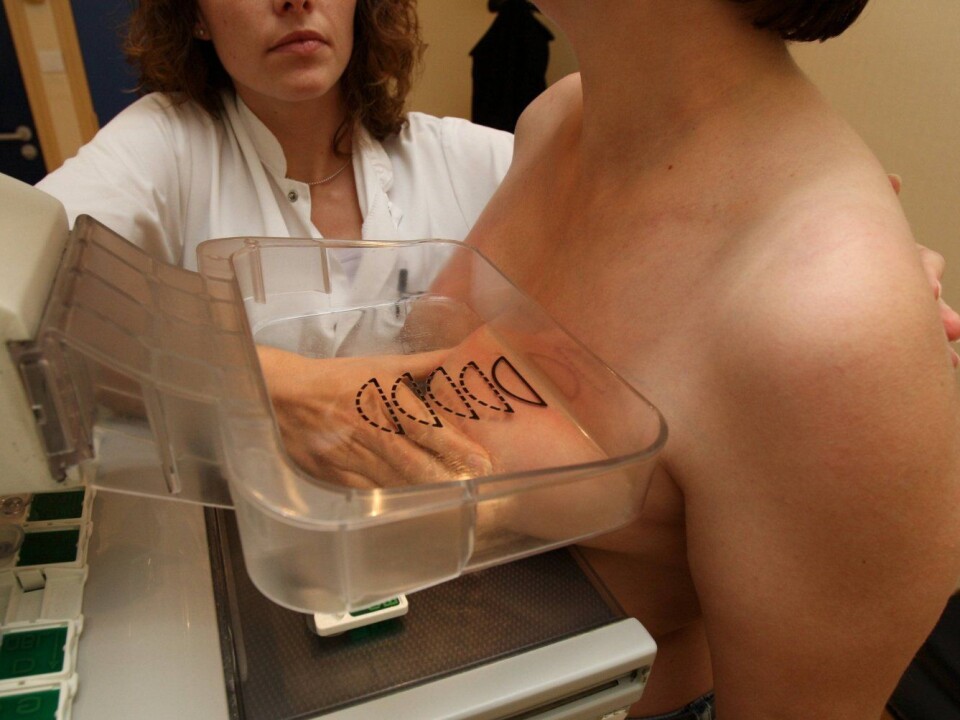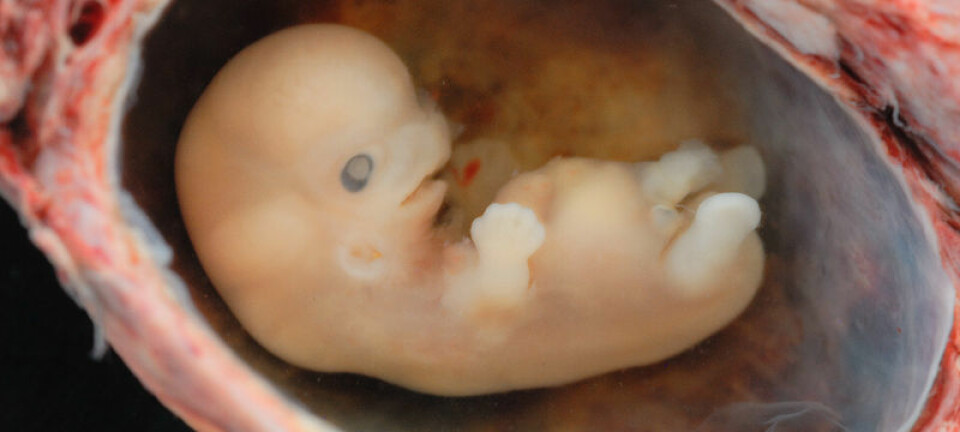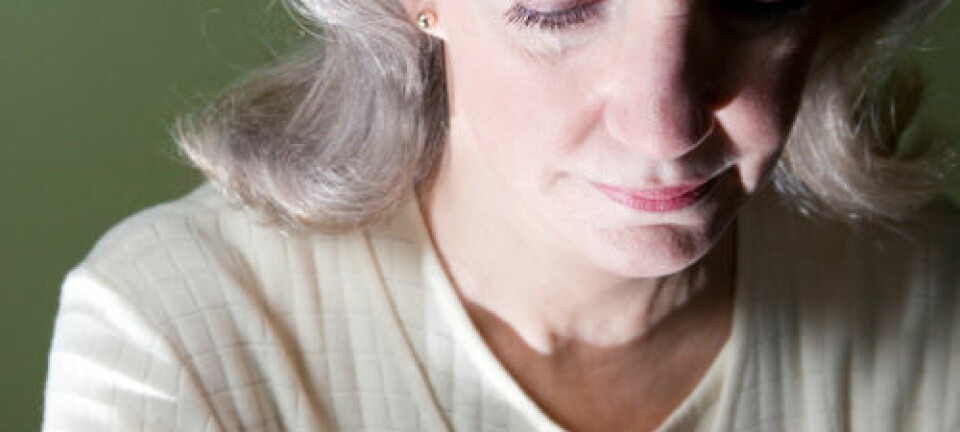
Screening for breast cancer to what effect?
Researchers are disagreeing on whether the Norwegian screening program on breast cancer has had the intended effect.
Denne artikkelen er over ti år gammel og kan inneholde utdatert informasjon.
All women 50 to 69 in Norway are offered mammograms to spot potential breast cancers. The programme was made nationwide in 2004 but experts disagree about its value.
Mass examinations like this are called screenings. Screening for breast cancer was initiated earlier in Sweden than in Norway.
A new study by French, British and Norwegian researchers, published in the British Medical Journal (BMJ), asserts that screening has not had an effect on the long-term trends for mortality due to breast cancer in Norway and Sweden.
Programme will be evaluated

Independent of the recent study, the entire mammogram programme will now be reviewed on behalf of the Research Council of Norway. The Ministry of Health and Care Services has commissioned the study.
This investigation will evaluate the effect of screening on breast cancer mortality rates in addition to gauging the professional quality of the programme and its social utility.
Parts of the evaluation are underway but others have been delayed. When the whole study is complete it should reveal which of the researchers have been right.
Positive trend
The rate of women dying of breast cancer has decreased in past decades. Screening and mammography do not appear to have been decisive factors in this positive trend.
When the screening programme started in Norway its goal was to curb mortalities by 30 percent.
The BMJ study compares deaths from breast cancer in Norway with mortality rates in Sweden, and medical researchers think if the initiation of screening had any effect it should be mirrored in statistics.
Hard to measure
However, Solveig Hofvind, who is a professor of radiography and researcher at the Cancer Registry of Norway, criticizes the BMJ study.
The Cancer Registry has the operational responsibility for the implementation of the mammography programme.
Hofvind maintains that mammography has a positive effect that it isn’t detected in the mortality statistics.
“I think screening helps decrease mortality but it is hard to separate its effects from the effects of treatment,” she says.
Hofvind refers to improvements in cancer treatment that have coincided with Norway’s implementation of the mammography programme. She thinks that the population figures used in the current study fail to take into account whether breast cancer is diagnosed before or after the screening programme was started.
“Moreover, the study shows that the peak reduction in mortality cannot be expected until 15 years after the screening started,” she says.
Gradual implementation
Hofvind thinks that the researchers behind the BMJ study failed to take sufficient consideration for the fact that the mammography programme in Sweden was started in a piecemeal way, and that many Norwegian women had taken mammograms on their own initiative before the screening was started in this county.
These factors could explain why the statistics show no drop in mortality directly linked to the programme.
Hofvind adds that breast cancer mortality was higher in Sweden than in Norway when Sweden started its studies in the 1970s.
She thinks it is hardly possible to catch the effect of mammography screening in statistical studies by using population figures because there are so many variant factors in the picture.
However, she does think that the goal of a 30 percent reduction in mortality was too optimistic.
More criticism of the project
Physician and statistician Per Henrik Zahl at the National Population Register has voiced criticism of the Norwegian mammography project for years.
He thinks the study in BMJ shows that the breast cancer screening has indeed had little effect.
“If there were a significant impact of the screening it would be evident in an analysis like this,” says Zahl.
He points out negative aspects of the screening. Among them is extensive treatment of tumours that would have disappeared on their own.
Zahl thinks these sides of the story should also be taken into account – particularly if it demonstrated that the programme has had little effect.
--------------------------------------
Read this article in Norwegian at forskning.no
Translated by: Glenn Ostling


































